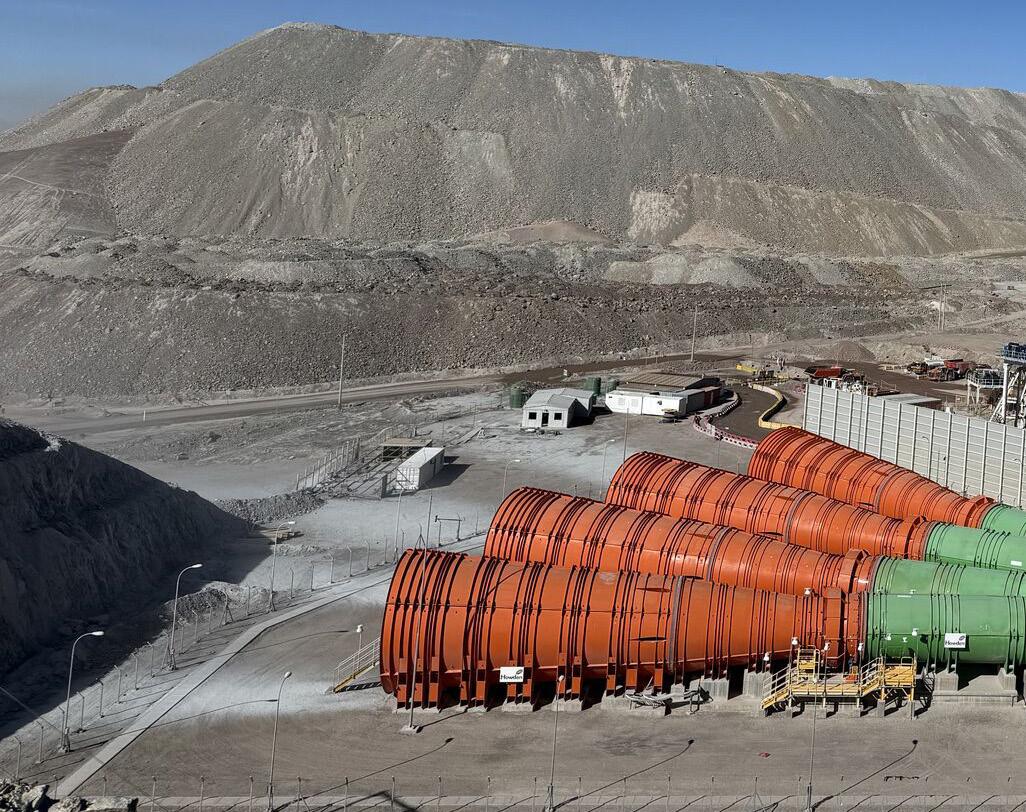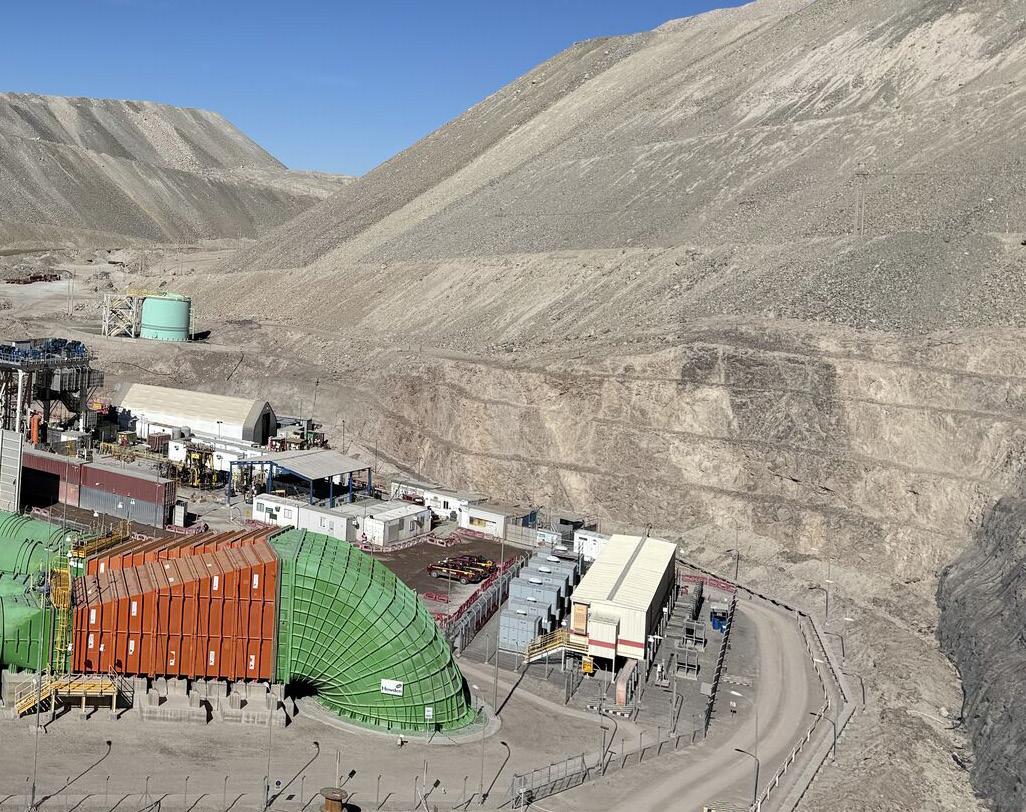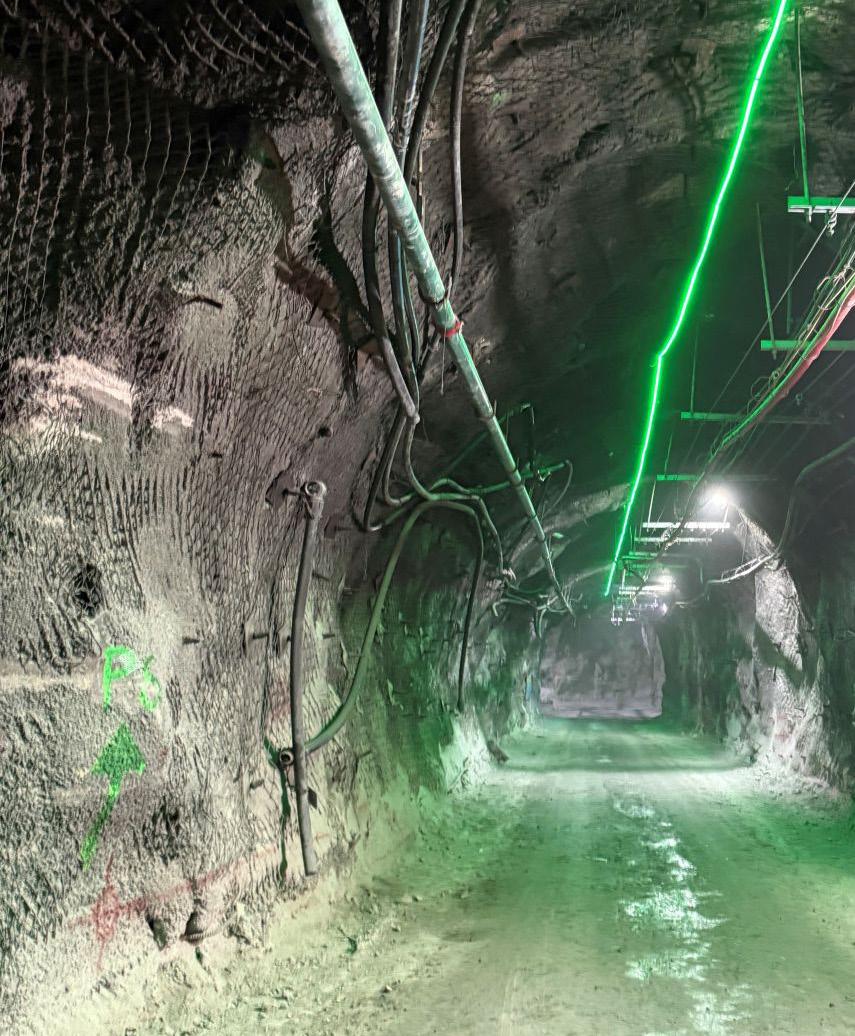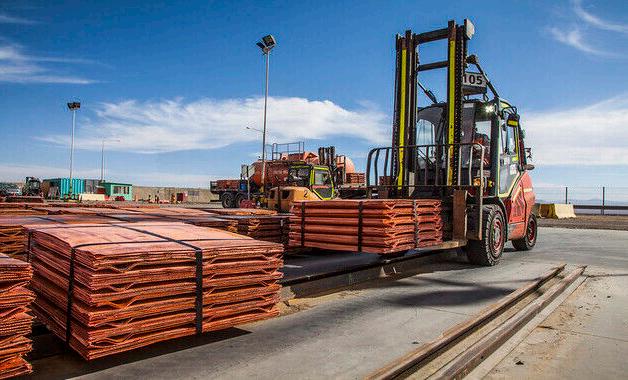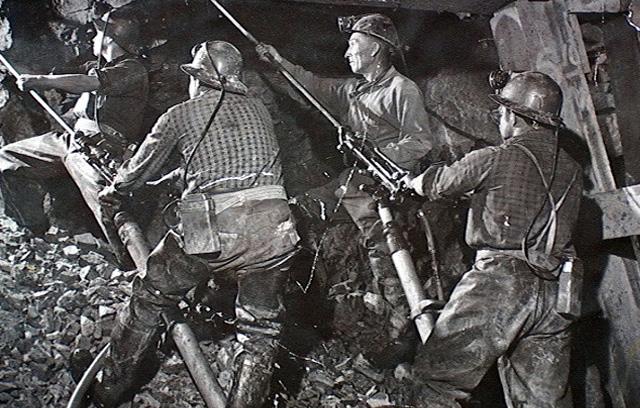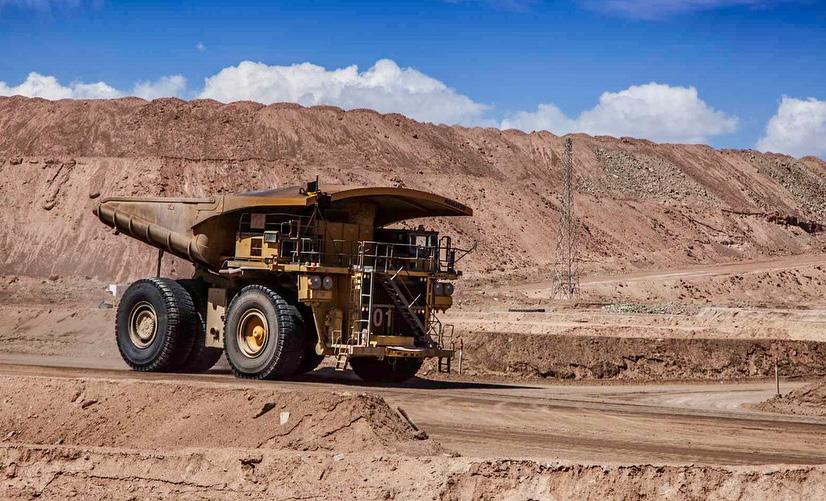MD/MDX Bolt dynamic friction bolt
Ground support in areas of seismic activity means controlling the immense force of dynamic rock – effectively. The equipment you use needs to be up to the task. But finding the right rock bolt can be a challenge. Conditions are varied, you’re up against tons of squeezing rock and powerful seismic activity, and above all else – it has to work brilliantly, across the board.
MD/MDX bolts from Sandvik are designed and built for extremely quick single-pass installation, unparalleled expansion, and increased load-bearing abilities. They have been created to provide reliable and long-lasting improvements to ground support work in all conditions, including areas of intense seismic activity.
They will change the way you work.
of transformational," says Pedro Cortés, Executive Vice President of Codelco's Northern Division. "We've essentially built a new mine beneath an old one, all while maintaining production and setting new benchmarks for safety and sustainability."
A Century of Transformation
When American entrepreneur William Braden staked the first claims in the dusty foothills of northern Chile in 1882, he could hardly have envisioned the industrial behemoth that would emerge. By the time the first copper ore was extracted from Chuquicamata in 1915, the world was in the grip of the First World War, and industrial demand for copper had reached unprecedented levels. Under the management of the Guggenheim
brothers' Chile Exploration Company, the early decades saw a rapid expansion of mechanization. The mine's trajectory shifted dramatically in 1971 when Chile nationalized its copper industry. Under the newly formed Codelco, Chuquicamata became more than a profit center—it emerged as a symbol of national sovereignty and economic independence. Throughout the 1970s and 1980s, Codelco invested heavily in concentrator and smelter upgrades, doubling processing capacity and improving recoveries from 85% to nearly 90%.
By the 1990s, however, the first signs of the open pit's limitations began to emerge. "The writing was on the wall by the early 2000s," notes former Codelco board member Jorge Rojas. "We faced a fundamental business question: how do you justify continued
The successful transformation would not only preserve thousands of jobs but also signal to global markets that Chile remained committed to maintaining its position as the world's leading copper producer
investment in an aging asset when the easy ore is gone? The answer wasn't to abandon Chuquicamata, but to reimagine it."
That reimagining took shape through a series of feasibility studies conducted between 2005 and 2010, which confirmed what many had suspected: the richest remaining ore lay beneath the pit floor, accessible only through underground methods. In 2012, Codelco's board approved an
initial $4.2 billion investment to transition Chuquicamata from open pit to underground operations—one of the most ambitious mining infrastructure projects of the 21st century.
For Chile's economy, where copper accounts for nearly 50% of export earnings, the stakes could hardly have been higher.
The successful transformation would not only preserve thousands of jobs but also signal to global markets that Chile remained
The centerpiece of this transformation is the Acop CC 110 project, completed in March 2025 to coincide with the mine's 110th anniversary.
committed to maintaining its position as the world's leading copper producer despite maturing assets. Engineering the Impossible – The Underground Transition The scale of Chuquicamata's underground transformation defies easy comprehension. Imagine constructing a subterranean city beneath an active mine—complete with its own transportation network, power grid, ventilation system, and digital infrastructure—all while maintaining production targets and safety standards.
The centerpiece of this transformation is the Acop CC 110 project, completed in March 2025 to coincide with the mine's 110th anniversary. This massive expansion extends the underground footprint northward by approximately 800 meters, accessing new ore blocks that will sustain production for decades. The statistics alone are staggering: 43 kilometers of primary and service tunnels, 4.6 kilometers of vertical accesses, and a fiveshaft ventilation network capable of moving over 600 cubic meters of fresh air per second.


ACCIONA, awarded a $78 million contract for the ventilation system, faced some of the most complex engineering challenges. "Achieving precise alignment over eight kilometers underground, in one of the driest, highest-altitude deserts on earth, required meticulous surveying, constant geotechnical monitoring, and an unwavering commitment to safety,” explains Laura Molina, ACCIONA’s Project Director. This commitment to safety has become a hallmark of the underground transition, with the Acop CC 110 workforce surpassing five million accident-free work hours as of March 2025.
The technical complexity extends beyond tunneling. Astaldi Group, under a $460 million contract, tackled some of the most challenging geotechnical conditions imaginable. The Chuqui porphyry’s steep, near-vertical jointing creates rock stresses exceeding 50 MPa
at depth, requiring specialized drilling and blasting approaches.
Digital Revolution and Automation
If the physical transformation of Chuquicamata is impressive, its digital metamorphosis is nothing short of revolutionary. Over the past five years, Codelco has transformed a century-old industrial operation into a
At the heart of this digital revolution is Chuquicamata’s partnership with Sandvik Mining and Rock Technology.
Between 2020 and 2023, Codelco fully implemented
Sandvik’s AutoMine and OptiMine platforms underground, orchestrating a mixed fleet of 12 Sandvik LH621 autonomous loaders and 18 man-in-cabin haul trucks
showcase for mining automation, artificial intelligence, and digital integration.
At the heart of this digital revolution is Chuquicamata’s partnership with Sandvik Mining and Rock Technology. Between 2020 and 2023, Codelco fully implemented Sandvik’s AutoMine and OptiMine platforms underground, orchestrating a mixed fleet of 12 Sandvik LH621 autonomous loaders and 18 man-in-cabin haul trucks. These systems enable 24/7 tele-operated loading, with integrated collision avoidance, automated bucket filling,
and dynamic load-dispatch algorithms.
The business impact has been immediate and measurable. Since full deployment, productivity per loader has improved by 18%, while overhead hoisting costs have dropped 12%. More importantly, the autonomous systems have removed operators from high-risk environments, contributing to Chuquicamata’s exemplary safety record.
The digital transformation extends beyond loading and hauling. ABB delivered a
In May 2025, as Chuquicamata celebrated its 110th anniversary, Codelco made headlines by formalizing two landmark partnerships with mining giants Rio Tinto and BHP
comprehensive automation package in late 2022 for Chuquicamata’s 13-kilometer underground belt system. Valued at $48 million, the contract incorporated gearless drives, ABB’s 800xA control platform, and the Mining Conveyor Control Program. The conveyor now moves up to 11,500 tonnes per hour of ore directly to the underground stockpile, significantly reducing truck traffic and lowering diesel consumption by 30%.
Perhaps most impressive is Chuquicamata’s embrace of artificial intelligence. AI-powered sensor sorting units now process up to 1,200 tonnes per hour of run-of-mine rock before it enters the crusher circuit—rejecting low-grade
material and improving overall mill feed quality by 5%. This seemingly modest improvement translates to an estimated 8,000 tonnes of additional copper produced annually, valued at approximately $80 million.
Strategic Business Alliances and Economic Impact
In May 2025, as Chuquicamata celebrated its 110th anniversary, Codelco made headlines by formalizing two landmark partnerships with mining giants Rio Tinto and BHP. These alliances represent a strategic pivot for Chile’s state-owned copper producer— embracing global collaboration to secure
Chuquicamata’s long-term future.
The Rio Tinto alliance centers on the Nuevo Cobre initiative, which seeks to co-develop deep-ore exploration targets adjacent to Chuquicamata’s known reserves. Rio Tinto will inject both capital and explorationdrilling expertise in exchange for a minority share of incremental production. Industry analysts estimate that the partnership could unlock an additional 10–15 million tonnes of copper resources—potentially worth over $100 billion at current prices.
The BHP collaboration focuses on digital systems integration—particularly sharing expertise in water-management algorithms and tailings filtration methods. What makes these alliances particularly noteworthy is their emphasis on technology transfer over traditional joint-venture financing. Rather than simply providing capital, both Rio Tinto and BHP are contributing
intellectual property, specialized expertise, and access to global supply chains.
"Codelco is taking a page from the tech industry playbook," observes mining analyst Sofia Mendoza of JP Morgan. "These aren't just financial transactions; they're strategic ecosystem plays that position Chuquicamata at the center of a global knowledge network."
Strategic Supply Chain Partners
Behind Chuquicamata’s remarkable transformation lies an intricate network of strategic supply chain partners whose specialized expertise has proven essential to the mine’s continued success. From engineering consultancies to equipment suppliers, these companies—both international powerhouses and local specialists—have become integral to Chuquicamata’s operational excellence.
"No mining operation of this scale succeeds in
isolation," explains Carlos Fuentes, Codelco’s Director of Supply Chain Integration. "Our partners bring specialized knowledge that complements our core capabilities, creating a collaborative ecosystem that drives innovation and efficiency."
Among the most significant contributors is Derk Ingenieria y Geologia Ltda., a Chilean firm providing critical services in geology, geotechnics, geomechanics, geomeasurement, and hydrogeology. With highly trained professionals working both in the field and laboratory settings, Derk has supported the engineering processes of Chuquicamata’s underground transition at every stage.
Local firms have also carved out essential niches in Chuquicamata’s supply chain. MORPET Tecnologías Aplicadas S.A. has pioneered circular economy solutions, supplying EcoDurmientes Ferroviarios (railtie wood composites) for the mine’s internal rail systems. Similarly, SIGMA has transformed
waste management practices through a closed-loop drum-return program, diverting over 250 tonnes of steel from landfills annually.
The collective impact of these supply chain partnerships extends far beyond operational efficiency. Over the past five years, Chuquicamata’s supplier and contractor network has generated more than 1,200 direct jobs in Calama and Antofagasta, directed over $320 million in procurement to 48 local firms, and invested heavily in workforce development through training programs and knowledge-transfer initiatives.
Sustainability and Community Integration
In the arid Atacama Desert, where water is as precious as the copper beneath the surface, Chuquicamata’s underground transition has become a proving ground for mining sustainability. Far from being merely an engineering project, the transformation represents a fundamental rethinking of how a major mining operation can
The collective impact of these supply chain partnerships extends far beyond operational efficiency. Over the past five years, Chuquicamata’s supplier and contractor network has generated more than 1,200 direct jobs in Calama and Antofagasta, directed over $320 million in procurement to 48 local firms
minimize its environmental footprint while maximizing its positive community impact.
Water management stands at the forefront of these efforts. In 2023, the mine commissioned its third reverse osmosis plant, processing deep-aquifer brackish water into industrialgrade supply. This investment, coupled with aggressive recycling programs, has reduced freshwater withdrawals by 22% since 2019— far exceeding the 15% interim target set in Codelco’s 2021 Sustainability Report.
The decarbonization journey has been equally impressive. In 2022, Chuquicamata transitioned 100% of its underground drilling fleet to electric-powered units, eliminating over 8,000 tonnes of CO2 equivalent per year from diesel combustion. Concurrently, the ventilation network was redesigned to leverage variable frequency drives on all axial fans, cutting electricity usage by approximately 18%.
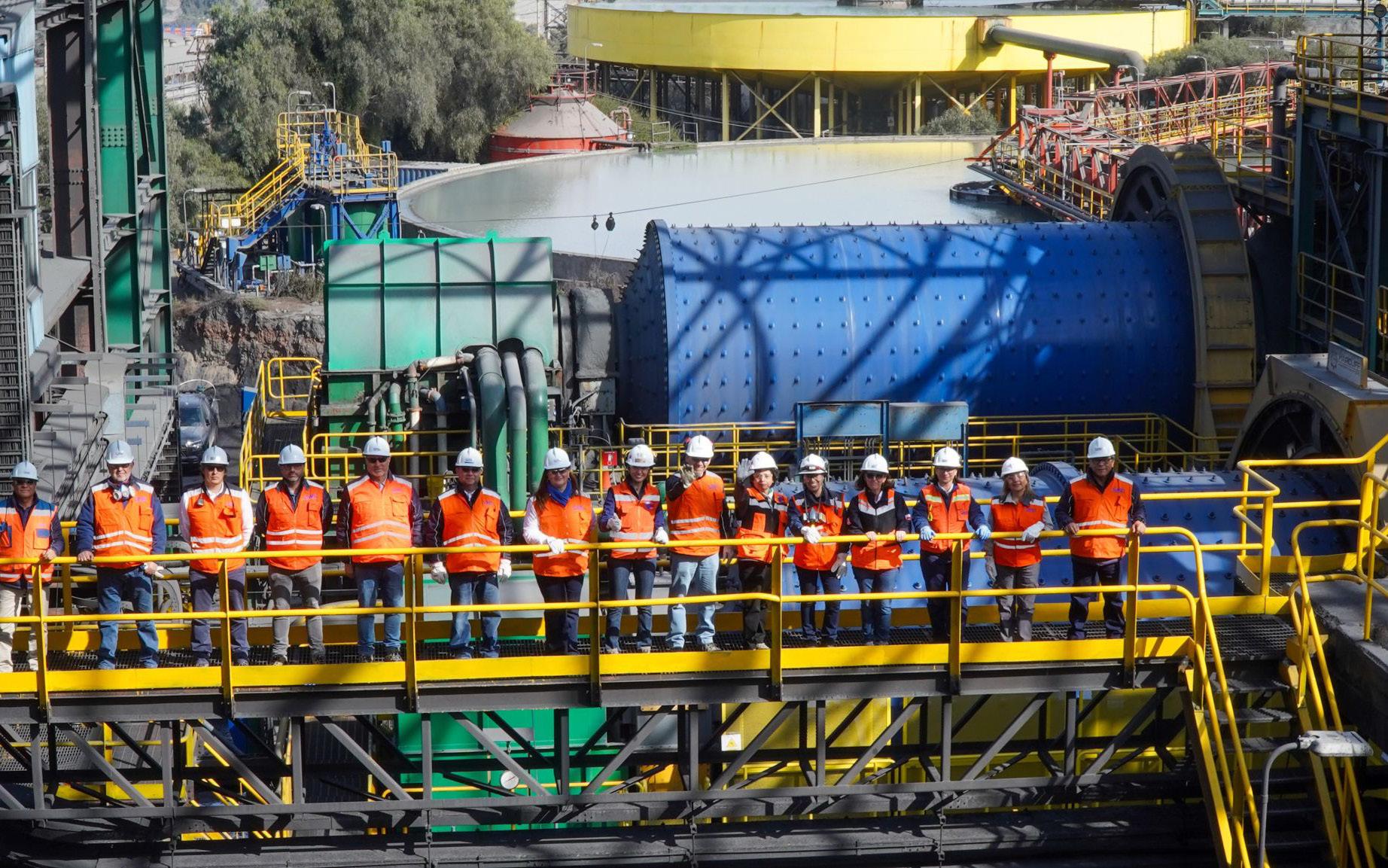
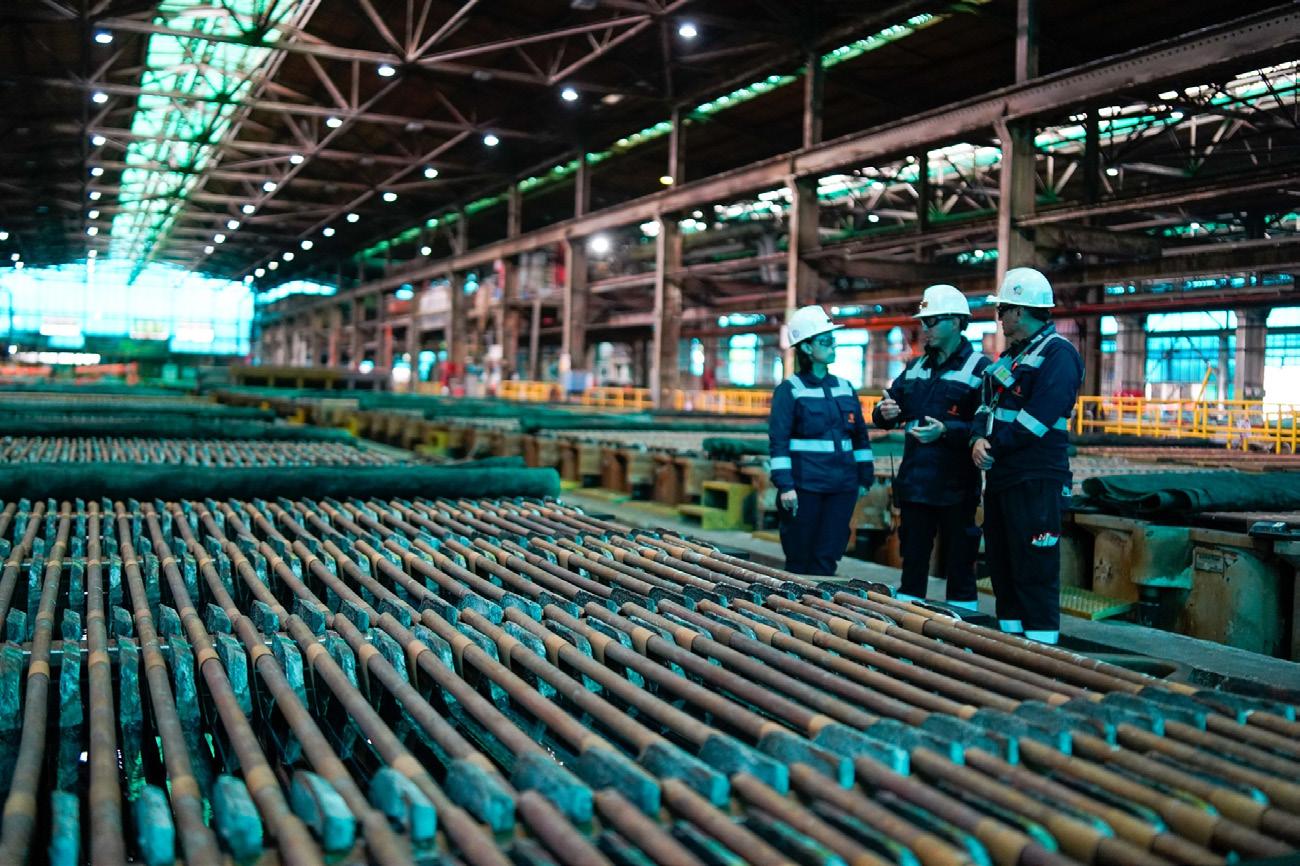
The community dimension of Chuquicamata’s transformation is equally significant. The underground transition created more than 4,500 new direct jobs between 2019 and 2024, requiring specialized skills in block-cave mining, automated-equipment operations, and digital systems analysis. The “Prospectores del Futuro” scholarship program, launched in 2007, has funded 200 Calama-area students annually to pursue mining and environmental engineering degrees at Chilean universities. By 2025, more than 1,500 graduates have entered mining-related fields—many returning to Chuquicamata as engineers and geologists, creating a virtuous cycle of local talent development.
Conclusion: A Legacy Reinvented
As Chuquicamata marks its 110th anniversary in 2025, the mine stands as a testament to the power of strategic reinvention. What began as a
dusty claim in the Atacama Desert has evolved through successive waves of technological innovation—from steam shovels to AI-driven autonomous loaders, from rail haulage to digital conveyor networks, from manual controls to integrated command centers.
The underground transition represents more than an engineering achievement—it embodies a business philosophy that values long-term sustainability over short-term gains. By investing billions in subterranean infrastructure, Codelco has secured Chuquicamata’s productive future through 2060 and beyond, ensuring that this cornerstone asset continues to generate value for Chile’s economy for generations to come.
“What makes Chuquicamata’s story so compelling is its refusal to accept conventional limitations,” reflects Pedro Cortés. “When faced with declining grades and increasing costs, we didn’t see the
By the Numbers: Chuquicamata at a Glance
end of a mine—we saw an opportunity to pioneer the future of underground mining.”
This pioneering spirit carries implications far beyond Chile’s borders. As mining companies worldwide grapple with maturing assets, depleting reserves, and increasing environmental scrutiny, Chuquicamata offers a blueprint for sustainable transformation— demonstrating how digital technology, strategic partnerships, and community engagement can breathe new life into centuryold operations.
Codelco Chile
Tel +56 2 26903000
codelcoir@codelco.cl
CODELCO
Codelco Chile
Headquarters: Huérfanos 1270, Santiago, Chile, Casilla Postal 150-D1
Tel.: +56 2 26903000
codelcoir@codelco.cl www.codelco.com
Produced by:


